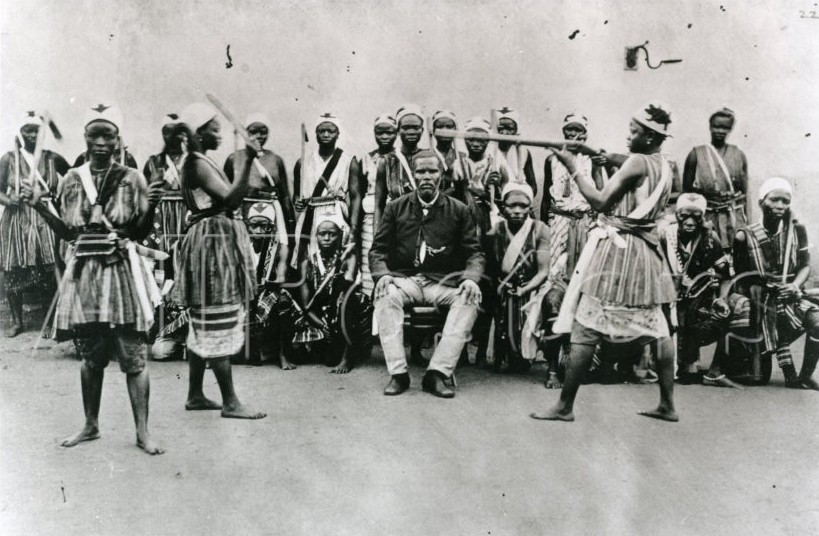The Ahosi (Amazons) of Dahomey were a military corps of women appointed to serve in battles under the direction of the Fon king, who ruled over a nation that included much of present-day southern Togo and southern Benin. They emerged during the Eighteenth Century and were finally suppressed during the 1890s. The Amazons were chosen from among the nominal wives of the king, called “Ahosi.” Estimates of the number of women soldiers vary by account, yet some scholars believe the numbers ranged from several hundred to a few thousand women soldiers.
The Fon women’s army had three main wings: the right wings, the left wings, and the elite center wing or Fanti. Each of these wings had five subgroups: the artillery women, the elephant huntresses, the musket-bearing frontline group, the razor women, and the archers. They served in battles in conjunction with male troops.
These women soldiers had extensive training and drilling. The Eighteenth and Nineteenth Century Amazons used flintlock muskets. They also used cannon, and later modern artillery and machine guns. Subject to celibacy under pain of death, they could not marry once they became Amazons, nor could they have children. In addition to their military duties, the Amazons also had daily occupations within the royal household. These occupations included indigo dyeing, weaving and selling mats, palm oil production and distribution, and sewing and embroidering cotton cloth.
For much of its existence during the late Nineteenth Century, the Dahomey kingdom thrived on the slave trade. Much debate exists on whether the slave trade fueled Dahomey’s wars with its neighboring nations or merely exploited and exacerbated existing conflicts. Dahomey’s Atlantic slave trade formally ended in 1865 with the antislavery patrols of the British Navy and the Spanish government’s closure of Cuban ports to slave traders. The trans-Saharan slave trade, however, continued as late as May 1892 with a market in North Africa.
As early as 1728, under the direction of King Gezo, the Dahomean Army, which now included the Amazons, conquered the kingdoms of Whydah and Popos. In 1840, they helped to capture the fortress of the Mahee at Attahapahms.
By 1748, after the Oyo Empire had subdued the Dahomey Kingdom, King Gezo restored Dahomey’s independence by defeating the Mahi nation, an ally of Oyo. With military success in part attributed to the Amazons, Dahomey attacked the Egba city of Abeokuta in 1851 and again in 1864. Both battles ended in defeat for Dahomey, with many Amazon casualties.
The last significant use of Amazons came in the Franco-Dahomean Wars of 1890 and 1892. The French conquered Dahomey in 1892 and were particularly ruthless toward the Amazons. They executed many of them partly because they noted that Amazons provided the last resistance to their conquest of the state. After that, the Amazon units were effectively disbanded. One of the first decrees announced after Dahomey formally became a French colony was that women of Dahomey would be prohibited from serving in the military or from bearing arms.


